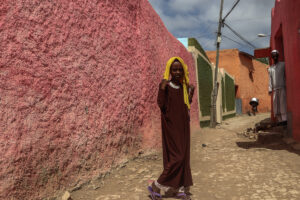When you go on an East African Safari you have a chance to get lost in more than just the pristine wildlife and landscapes that dot the area. This ancient region is home to an illustrious and extensive history, and nowhere in Africa is that history more prevalent than in Ethiopia.
Ethiopia is truly a gateway to an ancient world – one that everyone should experience.
When You Visit Ethiopia, Check Out These Historical Sites
Addis Ababa
This ancient city is an excellent place to become steeped in Ethiopian culture. It is home to churches, museums, and a lively music scene. The city itself dates back to the 15th century and is often referred to as the political capital of Africa. It served as the main residence of several ancient emperors.
The beautiful Imperial Palace is located within the confines of the city. It was built in the 1800s and remains the seat of today’s current government.
The Rock Hewn Churches of Tigray
More than 120 churches were built steeped high in the rock along the mountains of the Gheralta region of Tigray, over 1,600 years ago. Each of these churches have their own unique ancient murals and relics. Some are not easy to get to, requiring steep climbs up along rock surfaces in order to gain access. But the beautiful views and the intricate design work make it all worth it.
Lalibela
This town in the region of northern Ethiopia is also home to some distinctive rock hewn churches. These churches date back to the 12th and 13th centuries, and serve as a pilgrimage site for Coptic Christians. Many of these churches are connected by ancient tunnels and trenches, for better accessibility.
Gondar
This northern Ethiopia city is known for Fasil Ghebbi, a walled fortress and palace compound once used by ancient Ethiopian emperors. This is where the 17th century castle of Emperor Fasilides is located. This castle combines Portuguese, Indian, and local architectural styles.
The Simien Mountains
The Simien Mountains are a World Heritage site that includes a breathtaking national park. These mountains hold the distinction of being one of the few spots in Africa to regularly see snow. Because of their location in East Africa, they sit at the crossroads between three cultures: the Africans, the Arabians, and the Mediterranean. The land is filled with several beautiful historical sites that give you a strong sense for the region. Aksum, Lalibela, and Gondar are also in the vicinity – and each offer countless historical buildings and monuments to tour.
Tiya
One of the most important archeological sites in the Soddo region, there are monuments dotting the landscape that are carved with the symbols of an ancient Ethiopian culture. These monuments offer clues into a world past, but are now difficult to decipher. A visit to Tiya can put you in tune with ancient cultures.
Southern Omo
This region is notable for the Mago National Park and the Tama Wildlife Reserve. It’s also home to Lake Chew Bahir and Stephanie Wildlife Sanctuary. Several fossil remains have been discovered in this region, the most famous of which is our human ancestor Homo Gracilis.
Lake Tana
This is the largest lake in Ethiopia, and the source of the Blue Nile River, one of the two main tributaries to the Nile. In addition to the lake’s natural beauty, it also holds some historical significance. Remains of several Ethiopian emperors and treasures of the Ethiopian church are kept on isolated island monasteries.
Axum
This city (sometimes known as Aksum) is located in northern Ethiopia, and served as the home of the Aksumite Empire. This empire held a significant amount of naval and trading power from 400 BC into the 10th century. The location is now mostly a tourist town. It’s home to several monuments called steles, that date back 1,700 years and have become a symbol of the Ethiopian people’s identity. Axum is also home to the Church of Our Lady Mary of Zion, which was said to have been a one-time home to the Ark of the Covenant.
Bale Mountains
The Bale Mountains are located in the southern highland region and are known for glacial lakes and several unique species of birds and mammals. The park is in its prime May – September, during the warm weather times. It’s a prime region for spotting wildlife and distinct East African scenery.
Harar
This eastern Ethiopia city is surrounded by an ancient wall with several gates. It’s home to a rich collection of Islamic monuments with 82 mosques and 102 shrines. The town has been a major commercial center that links Africa with the nearby Arabian Peninsula, and the rest of the world.
Ethiopia’s cultural and historical sites serve as a doorway into an ancient world. These sites give a glimpse into early life on the African continent. While the African wildlife is truly magnificent, make sure you take the time to get a sense of the history and culture of this fine land, too.


